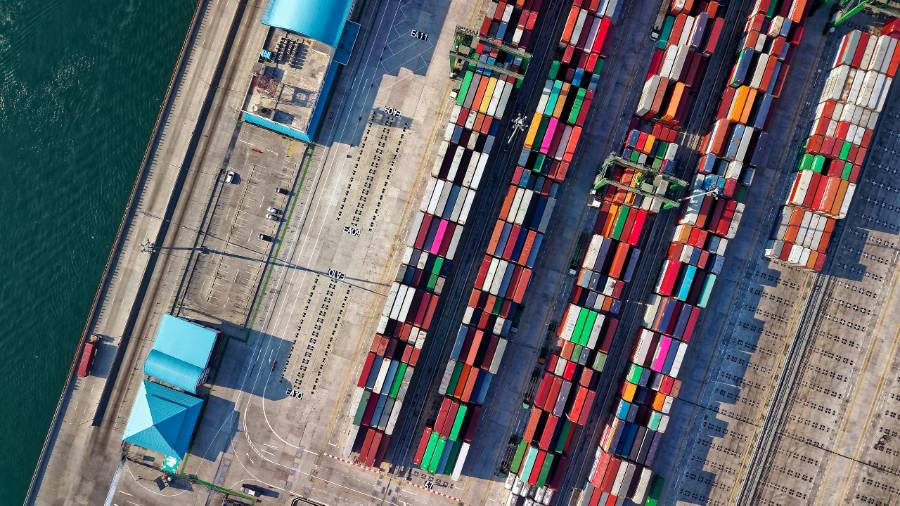Understanding, anticipating and reducing demand variability is a key role of supply chain management. Variation in demand can significantly impact many areas of a business, and so identifying the causes aids with demand planning and forecasting, both crucial for optimizing resource allocation and enhancing overall operations performance.
This article explores ten causes of demand variation in supply chains, ranging from external factors such as seasonality to internal factors such as sales promotions. By recognizing and understanding these factors and causes, businesses can forecast demand more accurately, prepare for and take steps to mitigate the costs, complexity and disruption whilst better adapting to ever-changing market conditions.
“External” causes of demand variability
“External” causes of demand variation are those that originate from “outside” the organization itself, such as market conditions.
Here are some of the main “external” causes of demand variation.
1. Seasonality
Demand on a business’ operations can depend on seasonality. For example, an ice cream manufacturer experiences different demand for their product in the winter months versus summer months. For the most part this can be predicted, and so the company can optimize its operations to meet customer needs while minimizing costs and maximizing profitability throughout the year.
2. Fashion
Fashion and trends can have a big impact on demand, particularly in industries such as clothing, accessories, and consumer electronics. Changes in clothing trends, for example, can happen rapidly if a celebrity is seen in a particular item of clothing. This is much harder to predict but paying close attention can allow operations to be ready and react quicker.
3. Changes in consumer and business customer income
The amount of money that consumers and businesses have available to spend can have significant influence over the demand for products and services. Economic downturns, such as recessions, often tighten purse strings, prompting individuals and businesses alike to become more cautious with their spending. During such periods, essential purchases will be favored over luxuries.
Conversely, during periods of investment booms or economic prosperity, consumers and businesses may feel more financially secure, increasing their discretionary spending and ultimately increasing demand for a wide array of goods and services.
4. Sudden global changes
Sudden, unpredictable global changes can also impact demand variation in a significant way, as we saw with the Covid-19 pandemic in 2020. In addition to global pandemics, wars and changes in legal regulation can also impact the demand on a business’ operations.
5. Actions of competitors and suppliers
The actions of a business’ competitors and suppliers can also have an impact on a business’s demand. Challenges faced by competitors or expansions in their offerings can respectively open or diminish market opportunities, while disruptions within the supply chain can lead to inventory shortages.
6. Randomness
Simple randomness exists (or is perhaps the culmination of another thousand factors beyond practical consideration. Within bounds, the unexpected should be expected.
“Internal” causes of demand variability
“Internal” causes of demand variation are those generated from “within” the organization itself.
7. Sales promotions
Sales promotions are an attractive marketing tool but can be very disruptive for the operations delivering them. A promotion is typically “designed” to trigger a short-term spike in demand by offering discounts or incentives that create urgency for consumers to make immediate purchases. Perhaps promotions such as “buy one, get one free” or seasonal sales like Black Friday. In addition to this, frequent promotions may condition consumers to delay their purchase, waiting for discounts, causing yet more unpredictable demand. This self-created variation can add great cost and complexity for the operations side of the business.
8. Scheduling decisions
Scheduling decisions by definition impact demand. Batching orders can be “efficient, but cause internal work surges. Scheduling can optimize for many different things, such as minimum total cost or shortest customer lead time, fairness, simplicity, giving priority to top customers and many other things… Each has its own impact on self created demand variation so deliberate, considered and strategic choices should be made.
9. Production choices
Production choices, like building-to-stock, will influence the demand on operations. Building-to-stock can be used to smooth demand in quiet periods but with risk of overproduction and holding cost. However, it can also add extra demand on top of already high periods further exacerbating internal demand variation.
10. Mistakes and Re-work
When mistakes are made, extra work is created either to make another or “re-work” the error. Both cost additional time, resources and materials that could have otherwise been allocated to other tasks and occur at unpredictable times adding to the total operational strain.
In summary, there are many factors contributing to demand variation, both external and internal. Some can be directly controlled by the organization, such as sales promotions and production choices, while others are outside of the organization’s control, such as sudden global events or changing trends. Being aware, understanding, anticipating, mitigating and reducing causes of demand variation is a universally valuable activity in operations and supply chain management.



